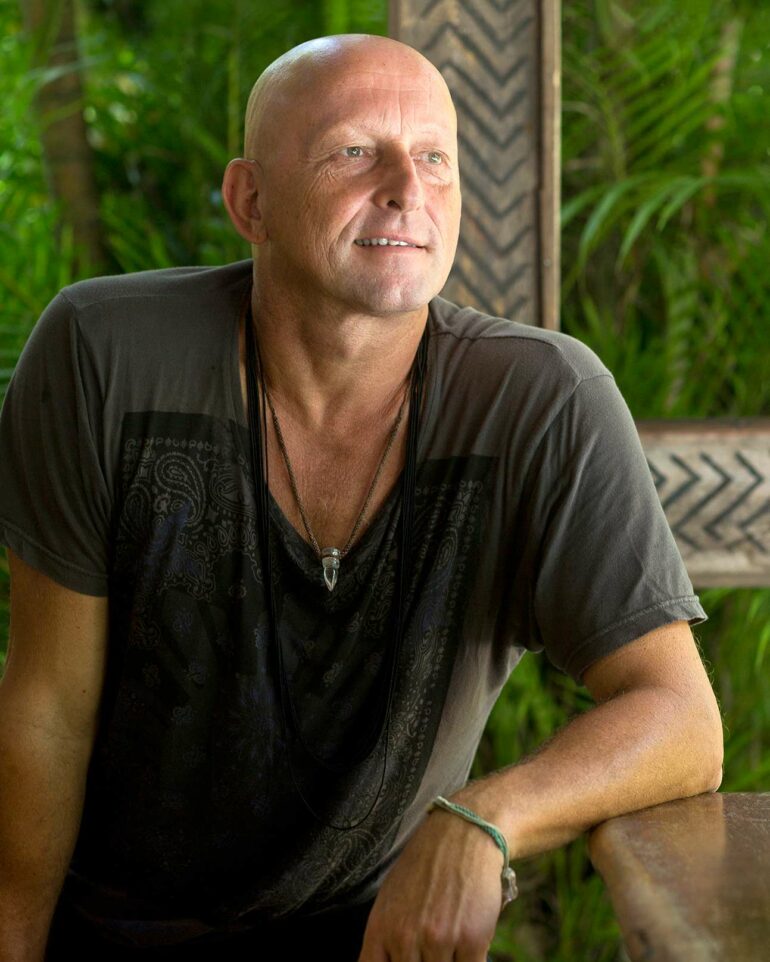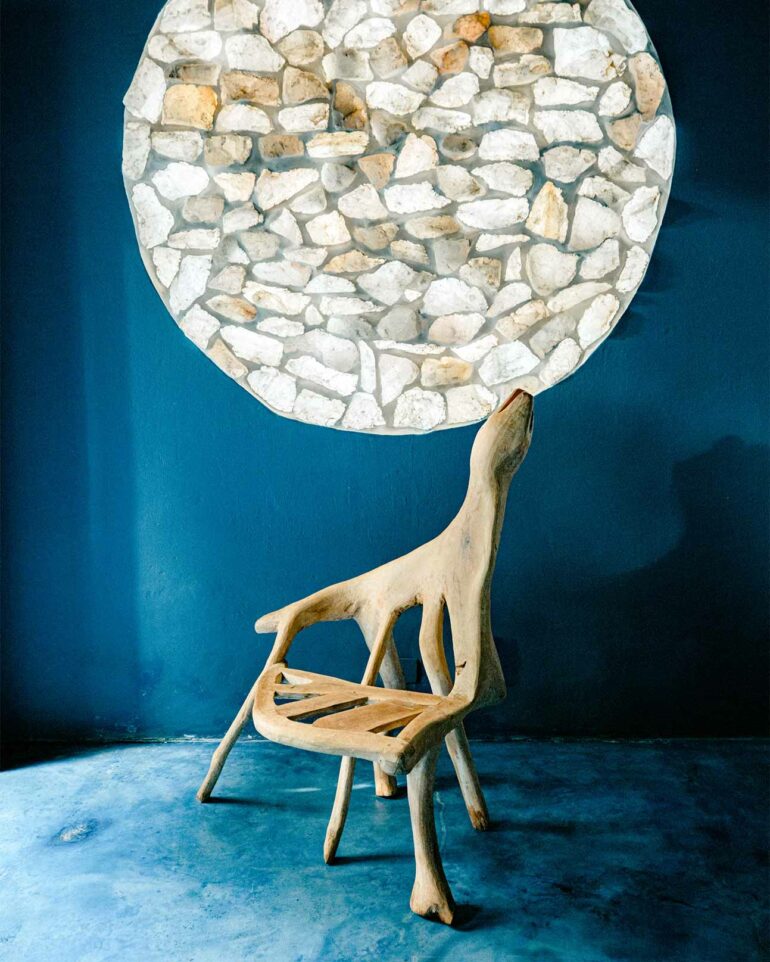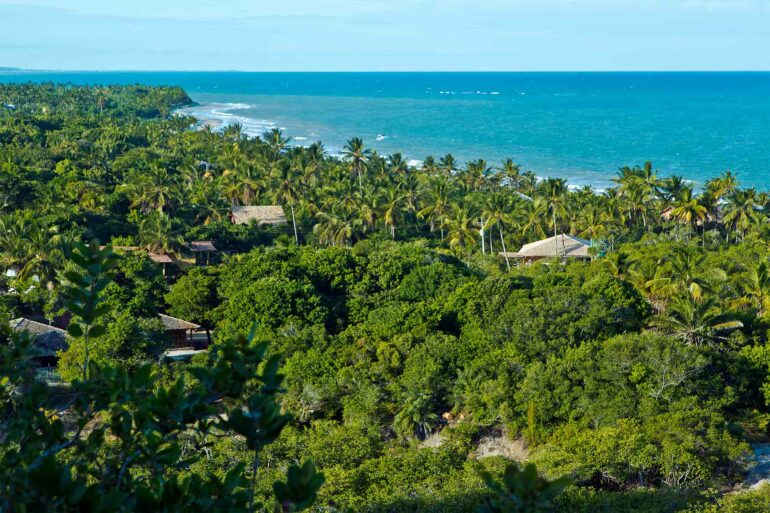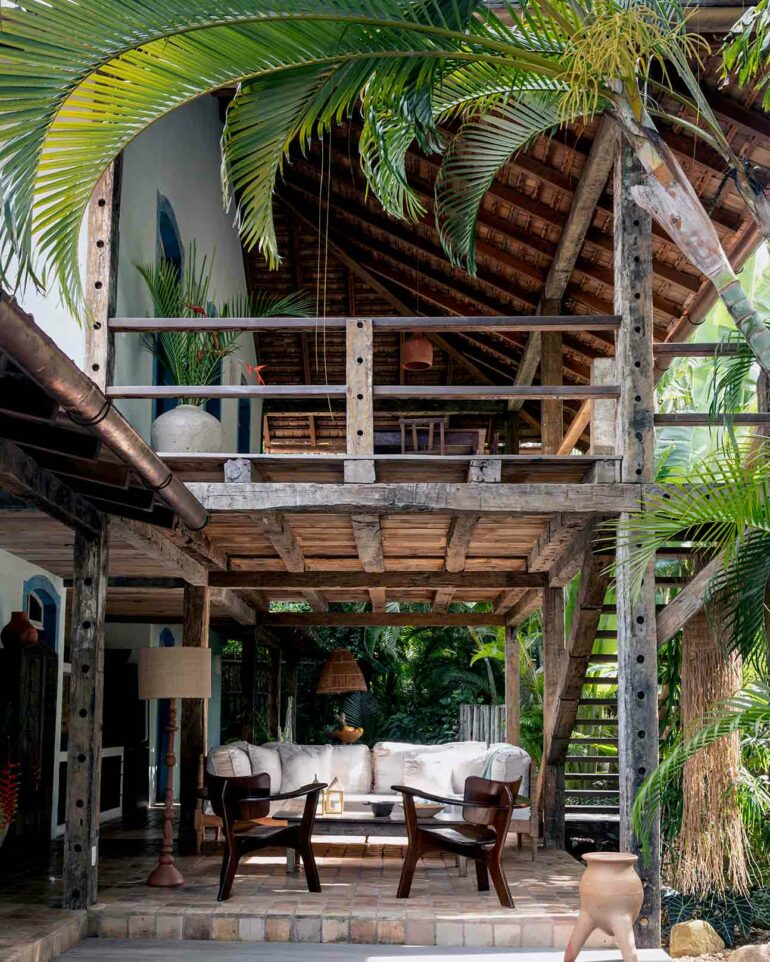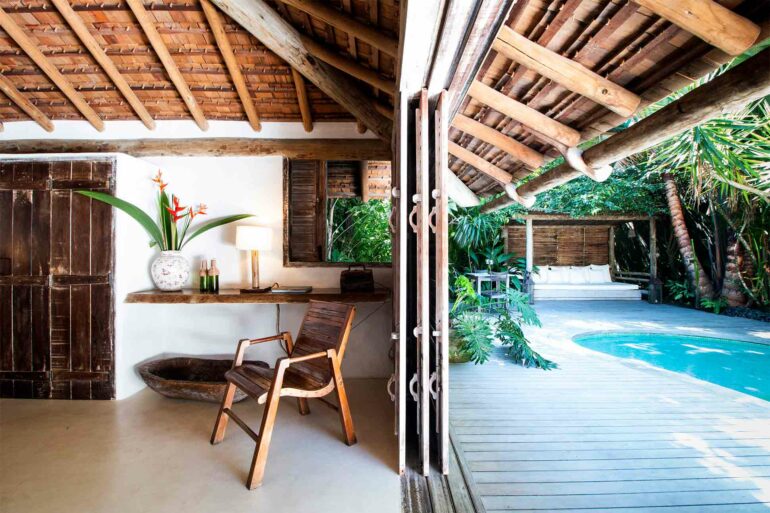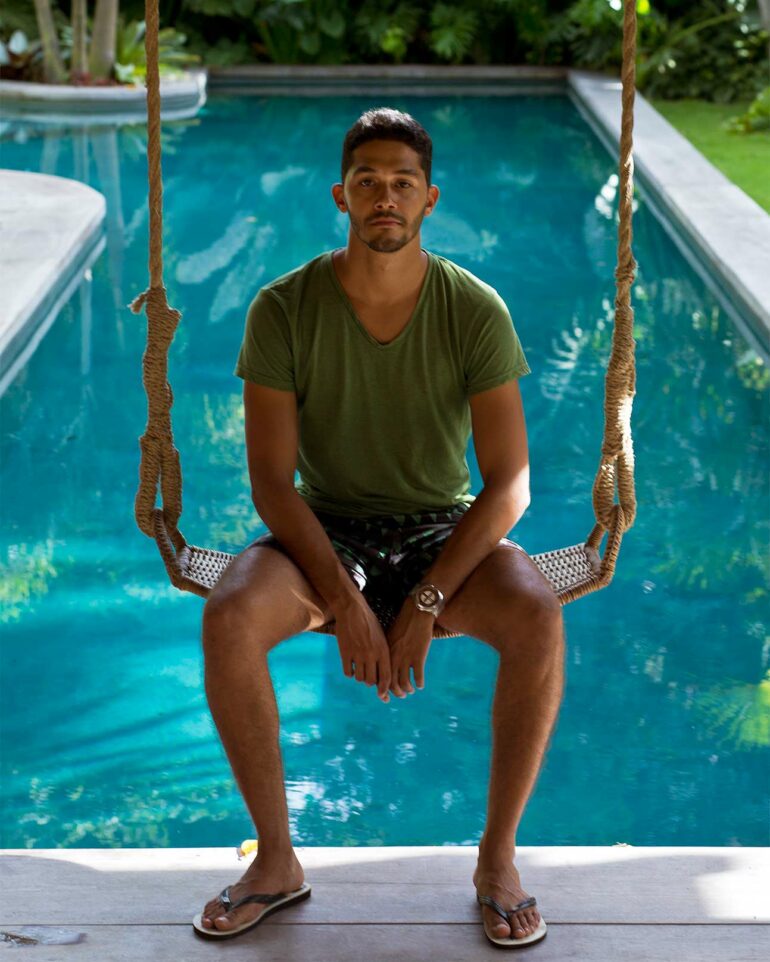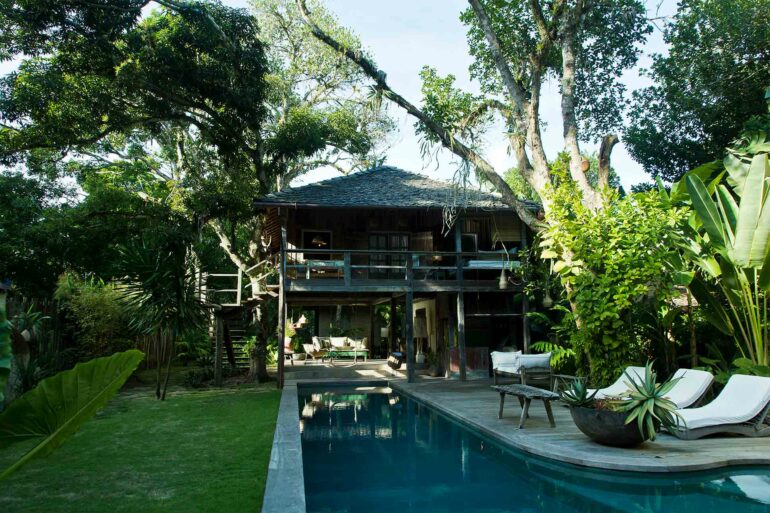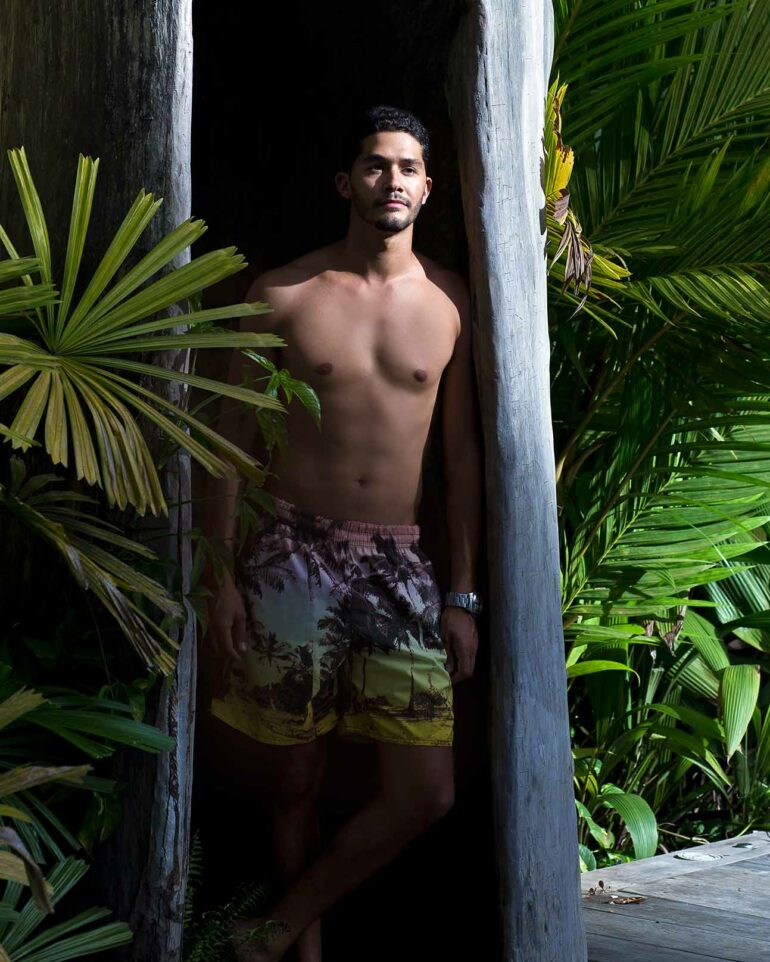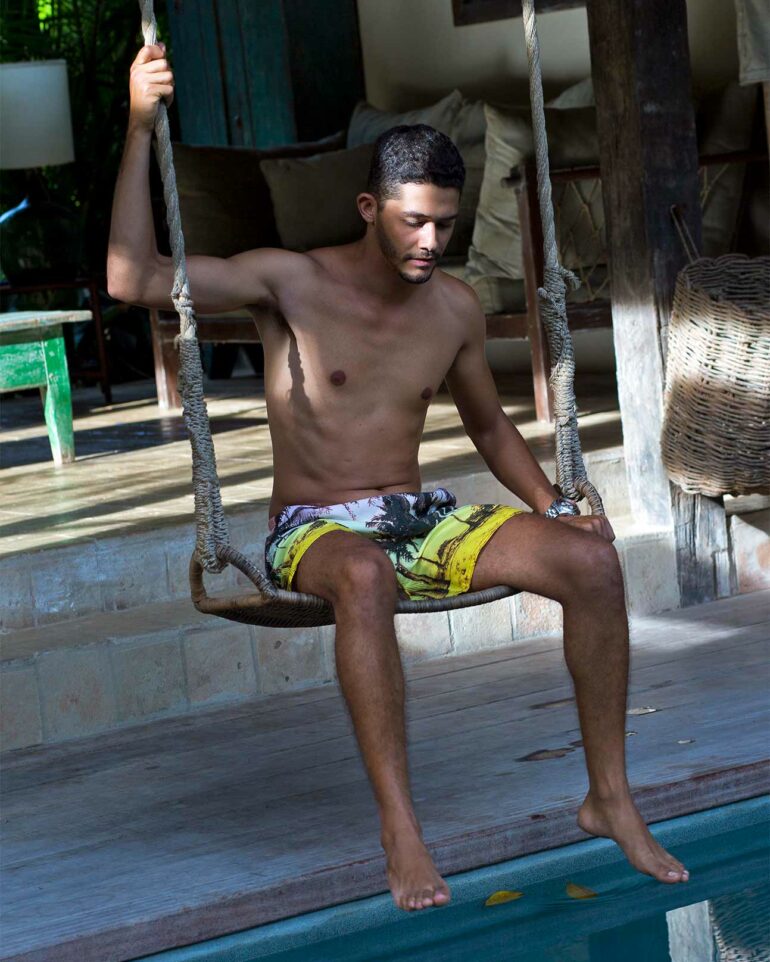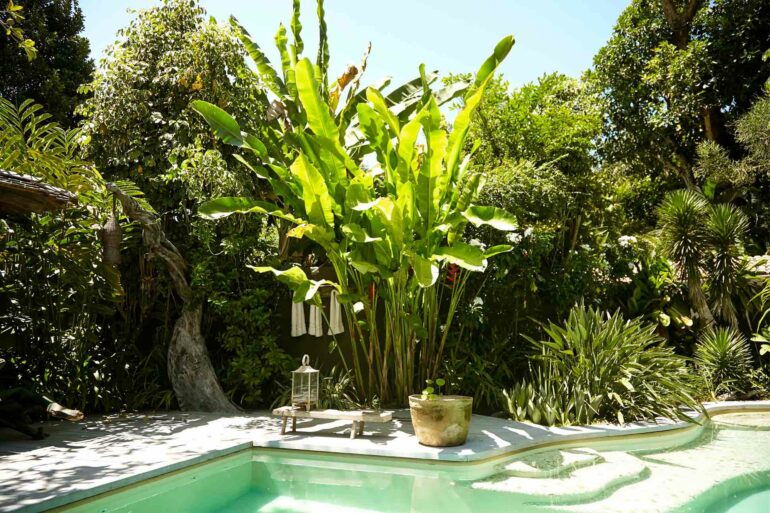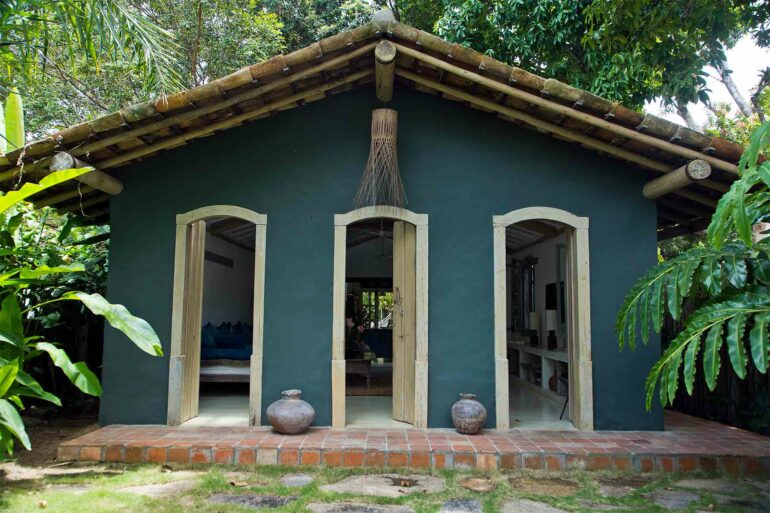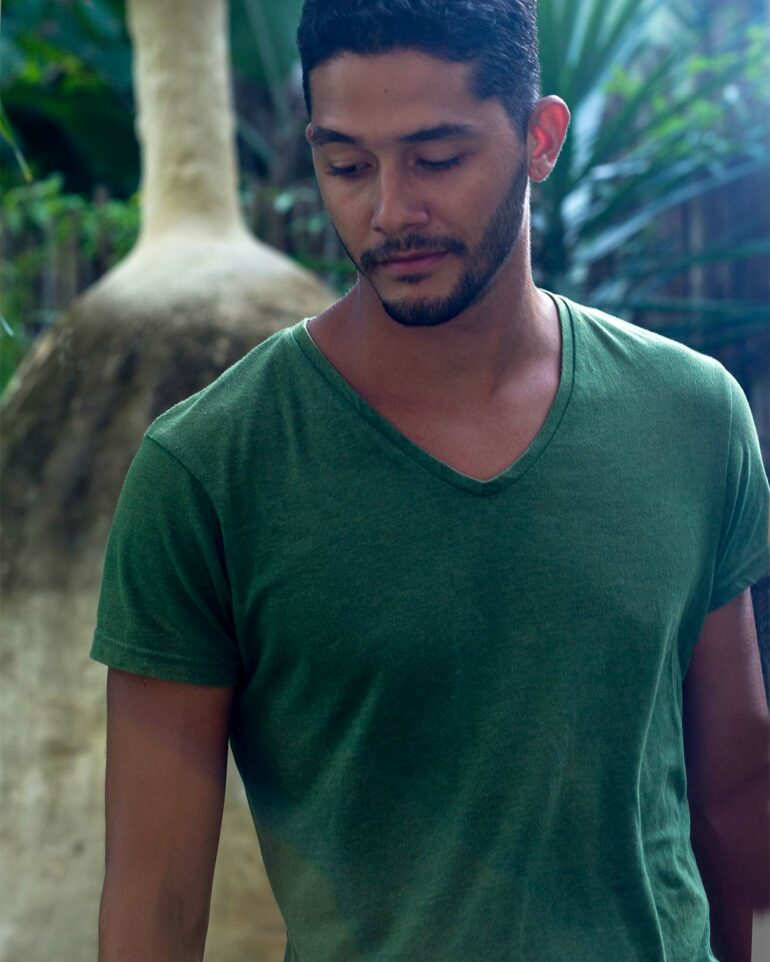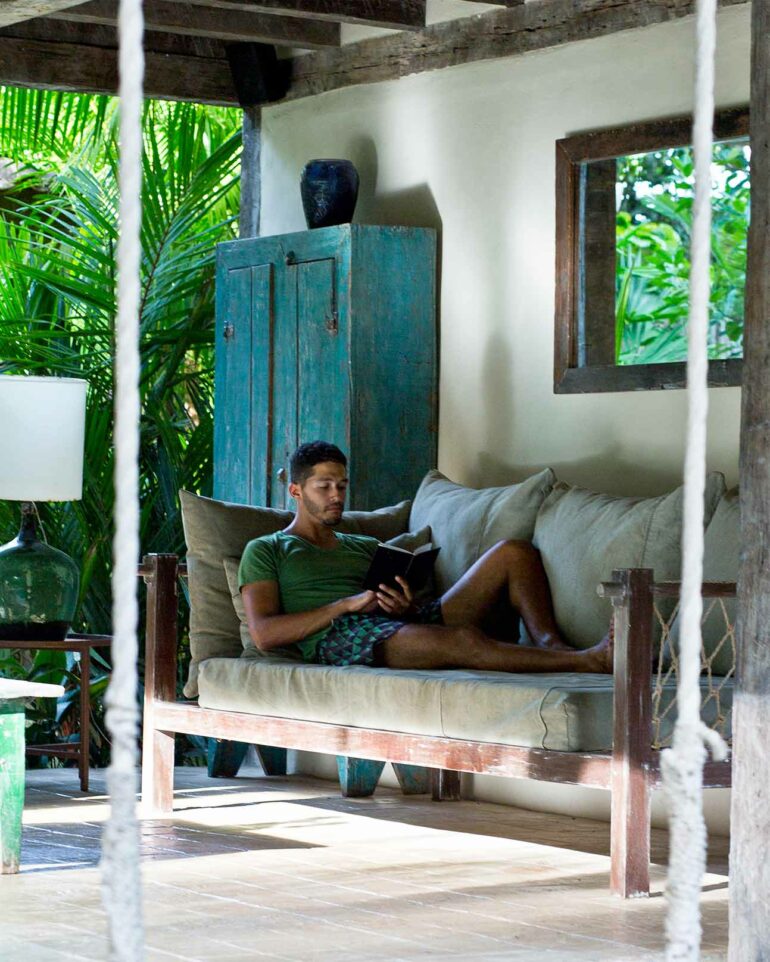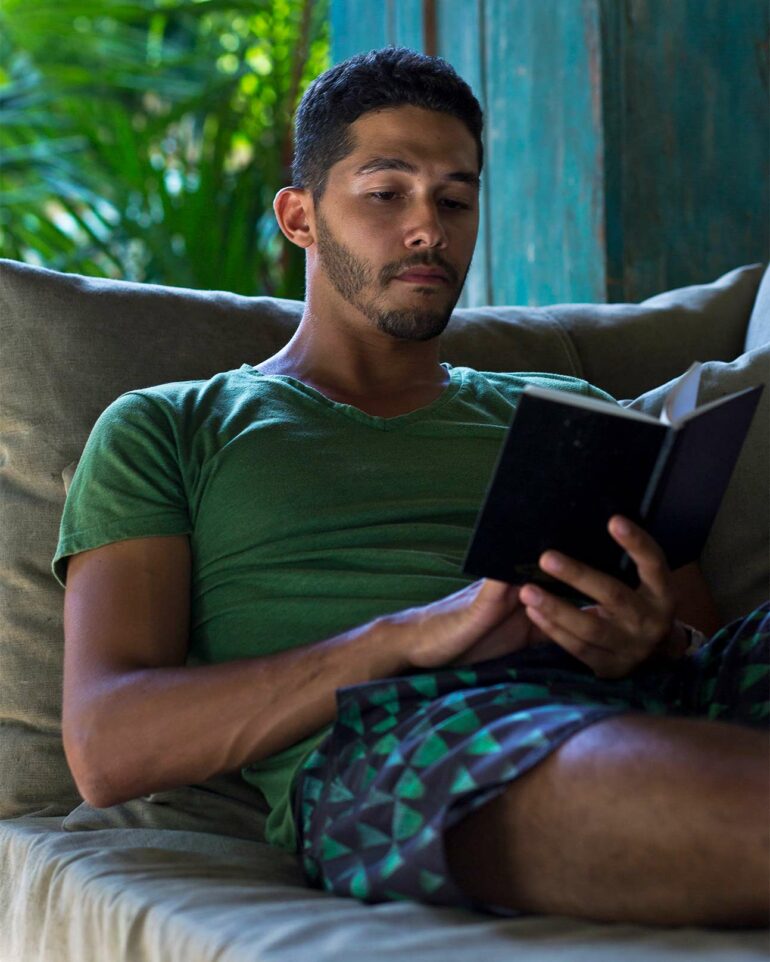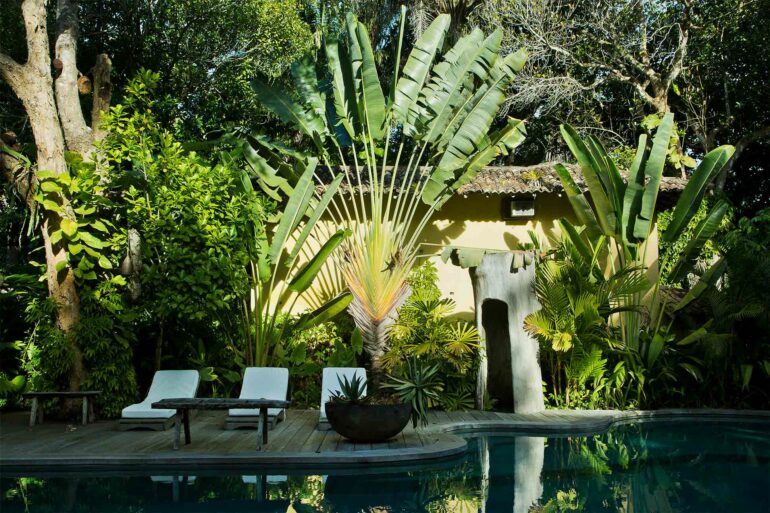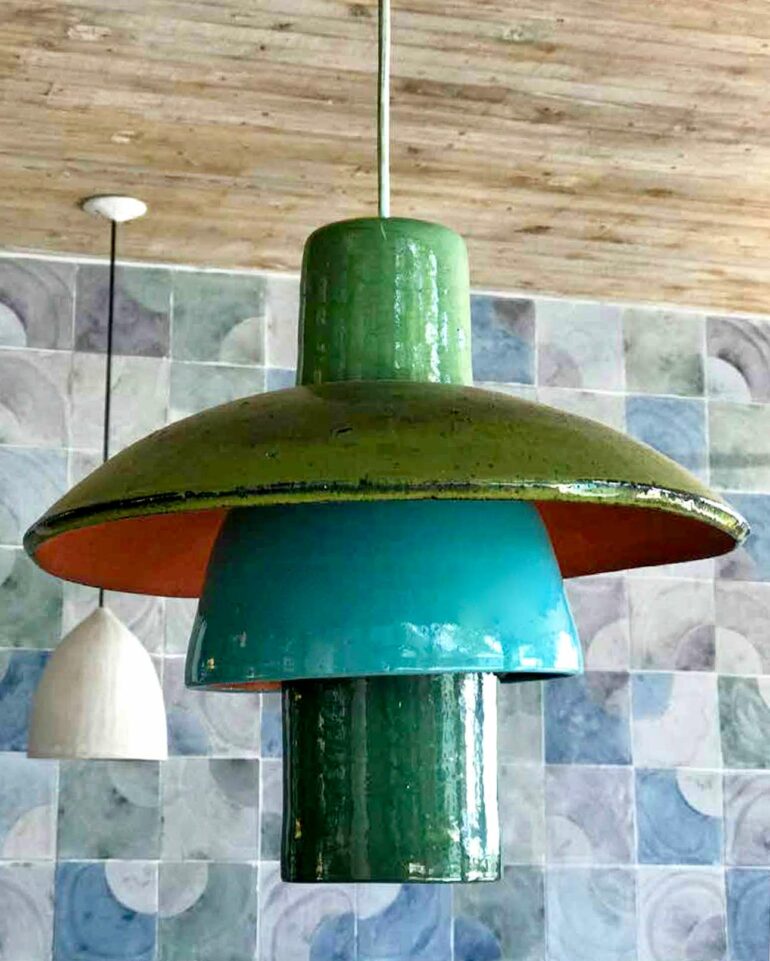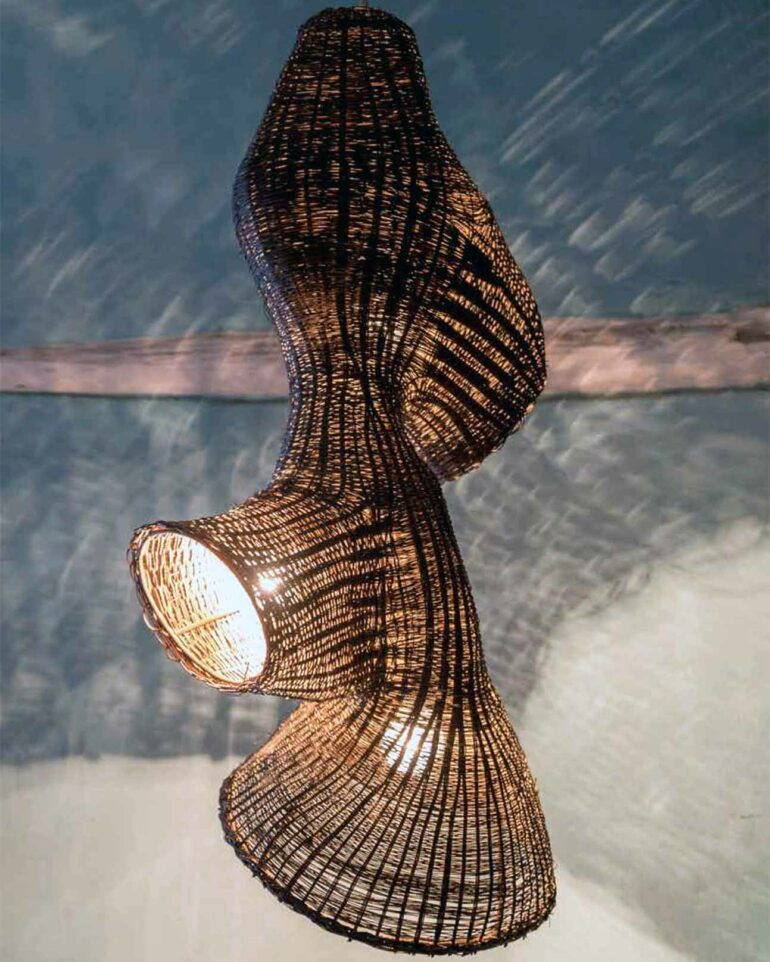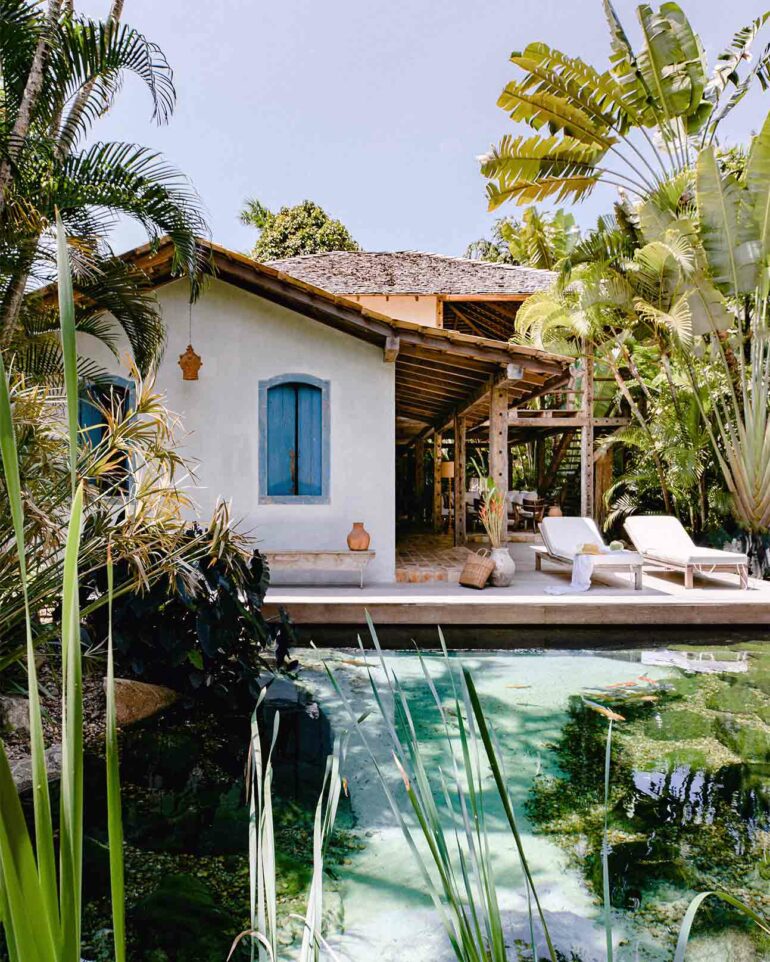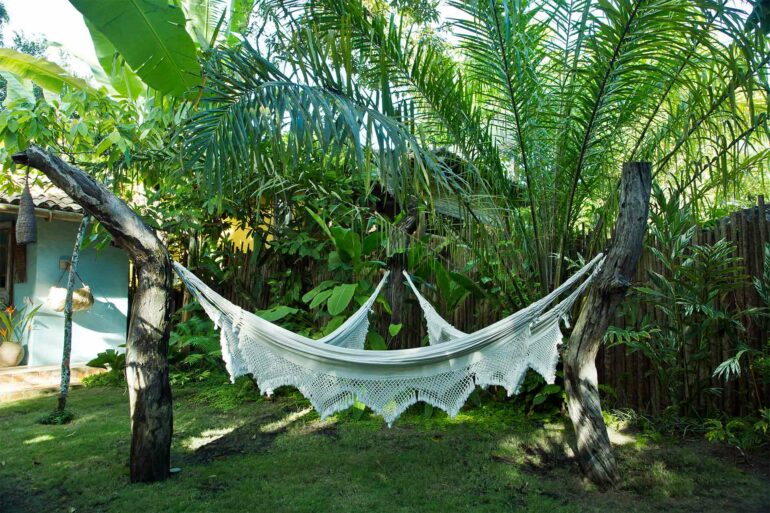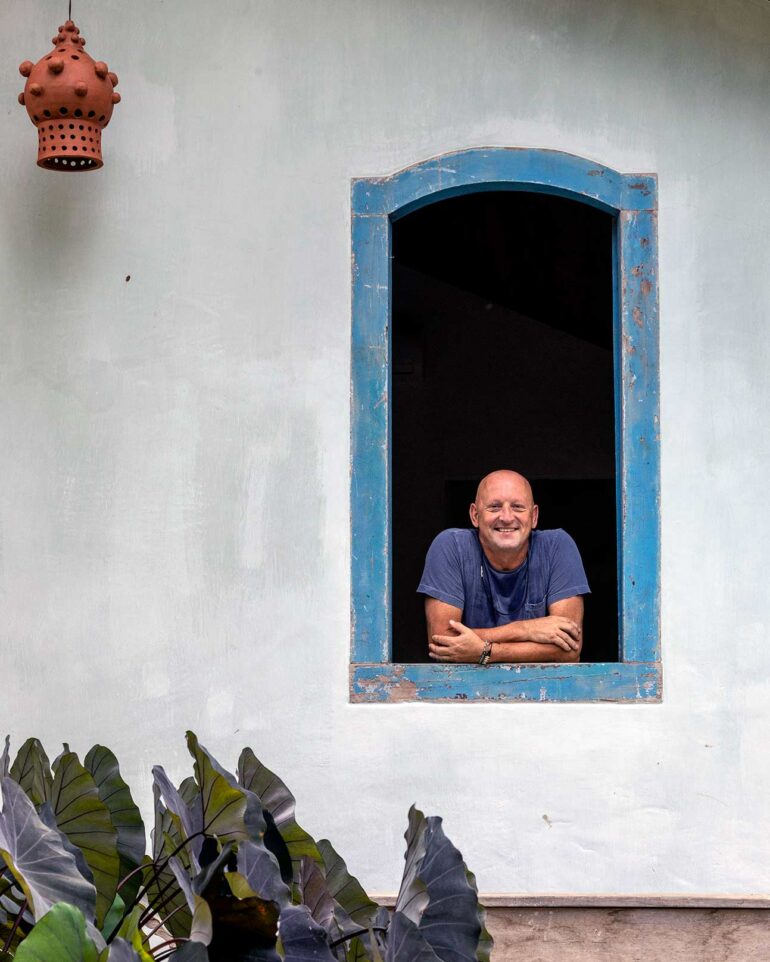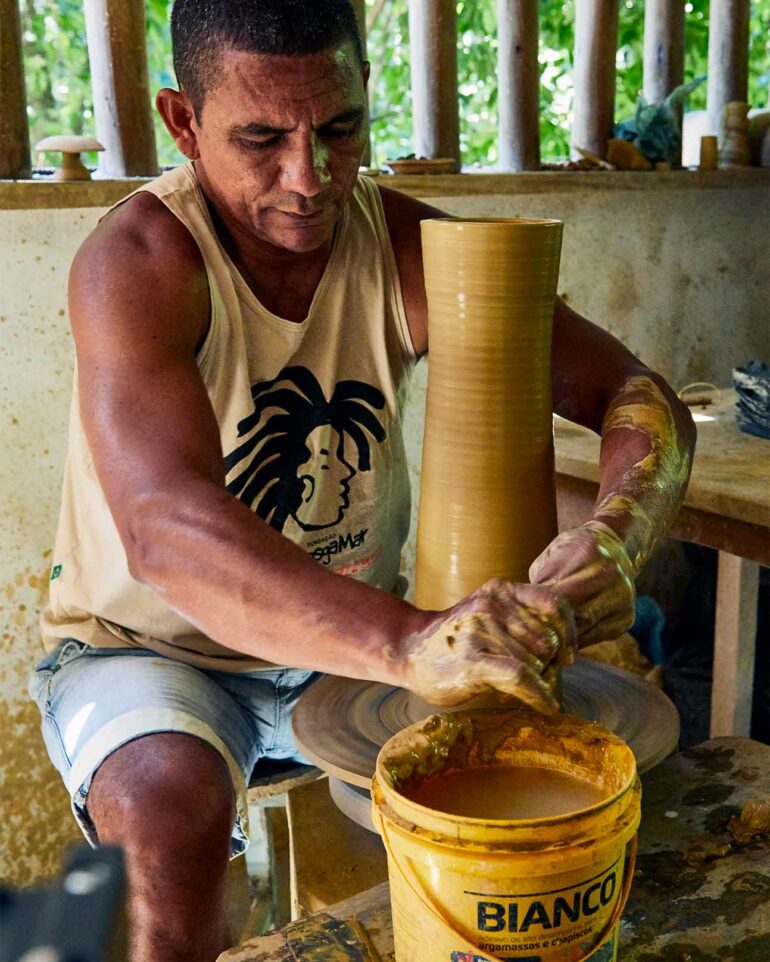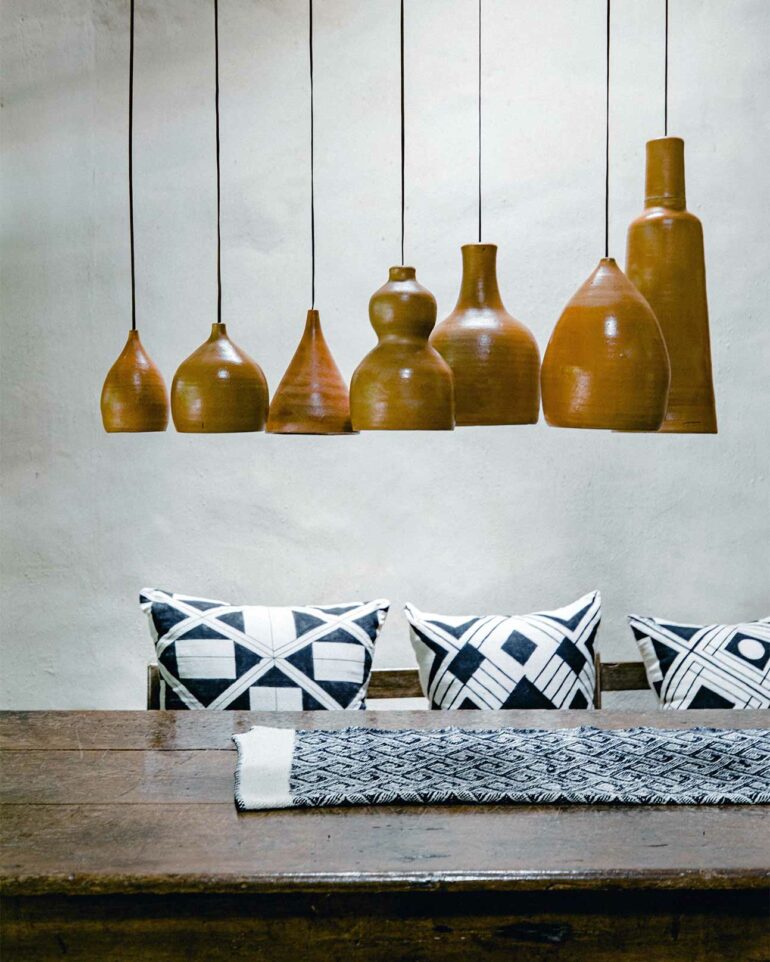Martin Perry meets Diesel’s former creative director, Wilbert Das, who left Europe for Brazil in the Noughties, with a dream to reconnect with the world. Today, a self-taught architect, sustainability expert and lauded hotelier, he is still driven by a passion for design.
The older I get, the more important it is for me to reduce the negative impact I have upon the planet, and increase the positive effect I have on those around me. But as someone who is creative, I also want to make beautiful things – like OutThere – that have a lasting impact. The enforced restrictions of the past twelve months have given me plenty of opportunity to contemplate my life and what inspires me and I have found myself reminiscing about a trip I took before Covid-19 disrupted our lives, to Trancoso in the south-east corner of Bahia, Brazil’s northern state. It was where I met Dutch designer Wilbert Das, the co-founder and creative force behind UXUA Casa Hotel & Spa. It was a meeting that resonated powerfully with me. Hearing Wilbert talk about his commitment to integrating his hotel into the natural environment, and to forming deep connections with the local community was as inspiring as it was nourishing. Like Wilbert, I try to surround myself with beauty and strive towards balance. Wilbert, it seems, has cracked it, after making a life-changing decision to follow his heart.
Wilbert grew up living close to nature on a farm in Riethoven in the southern Netherlands. At 19, he left to study fashion at the Academy of Fine Arts in Arnhem, graduating to work as a designer at some of Italy’s largest fashion, textile, furniture and lighting companies. His talent was quickly recognised and he rose to become creative director of what was then a young denim brand, Diesel, playing a key role in growing the label into a global household name.
Over a decade later, he was looking for a change. His need to reconnect to something more meaningful led him to Trancoso – a 16th-century fishing village with a strong connection to 1970s Brazilian hippy culture – tucked away between forest and ocean.

This story first appeared in The Experientialist Issue, available in print and digital.
Subscribe today or purchase a back copy via our online shop.
“I first came to Trancoso in 2004 on the recommendation of a close friend,” Wilbert said. “He couldn’t explain why, but he insisted that I had to go. Two weeks later I was on a plane and stayed for a fortnight. He was right. I was blown away by the energy, the people, nature and food; everything. It was the first time I’d found somewhere in the world that had all these things together in one place. I cried when I left and kept returning every chance I had for the next two years, when I bought myself a place here. My intention was for it to become my house and a design studio, but once we started building, I changed the idea into a casa hotel and UXUA was born.”
As I sat in the palm-dappled shade of the wooded garden at UXUA, the air filled with the sounds of birdsong and laughter from local kids playing just out of sight nearby, it was easy to see what drew Wilbert in. But it wasn’t just the idyllic setting. As a designer, he had to feel an aesthetic connection.
“From the very beginning, I was fascinated by the local style. There is a sense of aesthetic that is different from the rest of the world, from the rest of Brazil and even from the neighbouring village. There is a definable ‘Trancoso style.’ When I started to build UXUA, my idea was to make it even more site-specific, using only local materials, craftsmen and art. It was important to me that, as much as possible, we only used things that came from the village. Trancoso is rich in artisans, crafts and materials, so it came very naturally to create a place that is 100% authentically Brazilian. At the same time, I was keen to make it blend in as much as possible with its historic context.”
UXUA is a masterclass in sympathetic, environmentally conscious design. Wilbert’s team of local builders, boat-building carpenters and artisans used traditional techniques to build modern-day spaces, which integrate seamlessly into the forest, and they did so without cutting down any trees. Even small plants remained undisturbed.
“It is important for me that UXUA connects with nature. In the hotel, I exaggerate the lushness of the forest that our gardens are integrated into. I try to find native plants – the stranger the better – to put in my garden. The grounds are now becoming something of a ‘garden of Eden’.” Wilbert enthuses about nature with the passion of an artist and the eye of a gardener – a fervour that spills over into the interiors of the property, with indoor-outdoor bathrooms and trees growing into the inside of the ‘casas’. “Nature informs 90% of everything I do, it’s in all the objects I design,” Wilbert explained. “A piece can start with me finding a single piece of wood and I will design something around it. Nature is also one of the main reasons why I came here. If you are looking at Trancoso from the beach, all you see is forest. Even if it does have a lot of houses concealed within it.”
The four restored, historic houses on the ‘quadrado’ (village square), which form the basis of the hotel, are almost indistinguishable from those of the locals. Each of these UXUA houses are interspersed with colourful painted, single-storey dwellings, belonging to local families; something not often seen in hotels that tend to privatise as much space as possible for their guests. It’s an indication of how important it is for Wilbert to keep UXUA completely blended into village life. There is also no obvious signage outside of UXUA, reinforcing the idea that once you’re there, you are part of the community.
Outdoors, indoors: such is designer Wilbert Das’s love of nature, that casas at UXUA have been built around long-standing trees or open onto the grounds.
“I want people to come here and become a villager. These days, when people travel, they want an authentic experience of the place. I try to help that with the design of the hotel itself.”
Talking to Wilbert, I could see that having a strong sense of community – and how it relates to the notion of sustainability – are not just key ‘brand values’ for UXUA, but are an essential part of his own personal philosophy.
“Community was crucial to me from the very start. When we erected the first houses, the most important connections we made were with the builders and carpenters, all the craftsmen and -women from the village. So from the foundations up, we built a strong connection with the people we worked with. Their level of skill and willingness to work with me has been the key to everything I have achieved.”
His respect for Trancosans is tangible and reciprocated. The village throws two important cultural festivals, one on 20th January and the other on 3rd February. It’s a tradition that each year a new person is chosen to host them. In 2012, Wilbert was asked to organise one. As a foreigner, this was a very big honour and a sign he’d been accepted into the community.
This mutual respect flows into their shared projects. Far from imposing himself upon the local community, Wilbert has brought his boundless creativity and eye for design to the table and found ways of incorporating the skills and sensibilities of local artisans – to create a harmonious working relationship that has produced collaborations on everything from buildings to soft furnishings and plenty in between.
“The people here are amazing. They have a highly refined aesthetic sense because this place is in their blood. I would only need to point out what it was that I wanted to achieve and they would get it right at the first or second attempt. In contrast, when I used to work in Japan or the United States, or even in the UK, it was more difficult to communicate certain treatments, meaning that we had to rework things over and over. So, I was completely surprised by how easily people here understood what I wanted.”
Local history is also a key ingredient in Wilbert’s recipe for UXUA’s success. The ingenuity and skill of the indigenous Pataxó people in making intricate functional objects and highly decorative costumes from the natural environment is well documented and something which fascinates Wilbert. Pataxó culture is quite literally woven into the fabric of UXUA, a result of his ongoing creative partnerships with the locals.
“Creativity here flows easily. I’ve worked with many creative people in my former life, but it’s a much more relaxed, human way of operating here, coming from working one-to-one in a very calm environment. It’s much better for me, I get to work at a slower pace, and concentrate on what I actually want to achieve. And I hope I have had a positive impact on their lives.”


